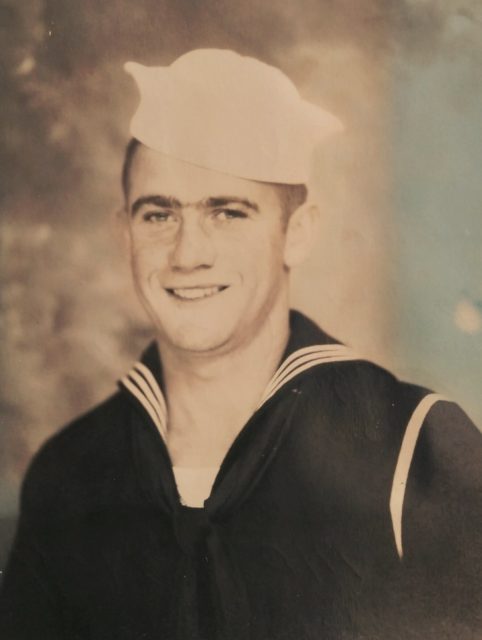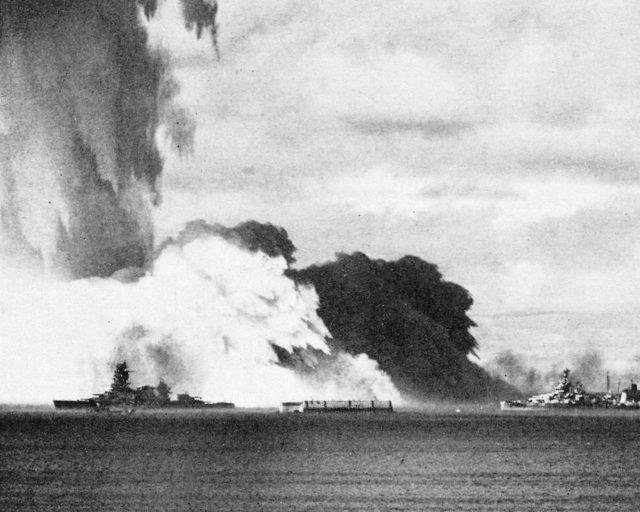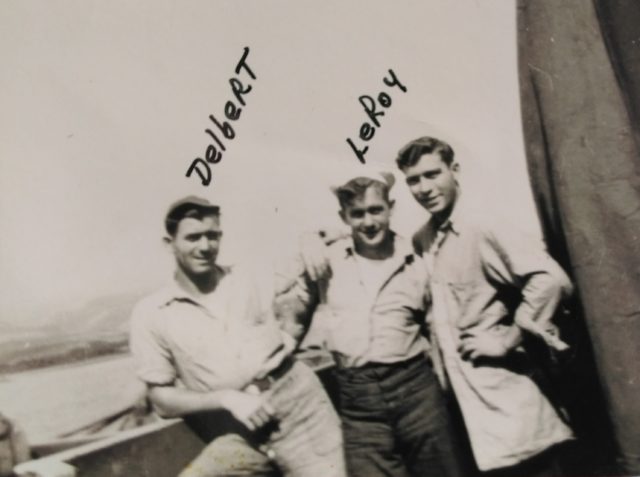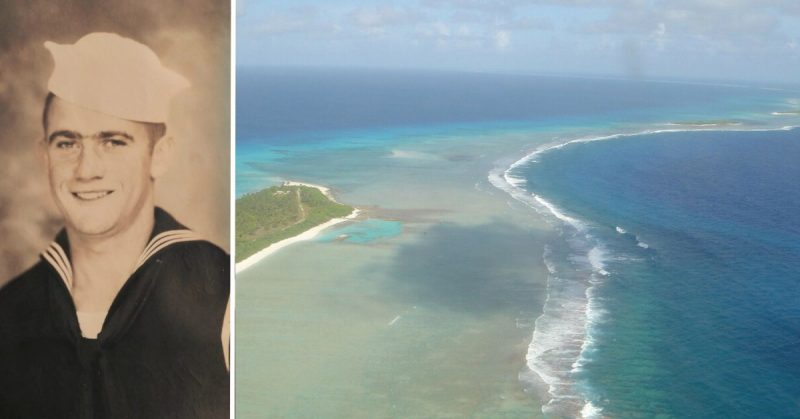War History online proudly presents this Guest Piece from Jeremy P. Ämick, who is a military historian and writes on behalf of the Silver Star Families of America.
The Bikini Atoll in the Marshall Islands is the visage of paradise—lovely beaches, palm trees and brilliantly colored fish swimming through stunning blue waters. Yet this hidden gem situated between Hawaii and Australia in the South Pacific was once “ground zero” for the testing of nuclear weapons by the United States, an event witnessed firsthand by Jefferson City resident Louis “Leroy” Poire.
Born in 1927 in the small community of Hale, Mo., Poire attended “a little country school” and, after completing the ninth grade, left his studies to help with the never-ending list of chores on his family’s farm.
“It was during the latter part of World War II and I decided to enlist in the Navy four days before I had to register for the draft,” Poire recalled. With a grin, he added, “I didn’t want to end up in the Army or Marines.”
The 22-year-old recruit began his active service on October 31, 1945, traveling to the Naval Training Center in San Diego to complete several weeks of basic training. From there, the former sailor explained, he boarded the USS Alabama and sailed up the coast of California to San Francisco.

“Once we got to San Francisco, the Navy put a bunch of us on a plane and flew us to Pearl Harbor,” he said. “Then, they put us all up in barracks and within a few days, everyone shipped out of there for various assignments—all except me,” he added.
The day following the departure of his fellow sailors, Poire recalls sitting in the barracks when Delbert Poire—his older brother who was also serving in the Navy—walked in to greet him.
“I found out that my brother was serving aboard the (USS) PGM-32 and he and the skipper arranged to have me held back so that I could be assigned to his ship,” Poire said.
Commissioned February 9, 1945, the USS PGM-32 was classified a “motor gunboat” and could sustain a complement of 65 crewmembers. Once aboard the ship in early 1946, Poire and the crew of the gunboat departed Pearl Harbor to participate in an event of major consequence possessing a legacy that has been obscured by the passage of decades.
“We sailed for the Bikini Atoll and once we arrived, we anchored for several days,” said Poire. “Then when they got ready to drop the atomic bomb, we pulled anchor and sailed in a circle about 11 miles from where the bomb exploded”
Named “Operation Crossroads,” in 1946 the U.S. would “test the effect of nuclear weapons on naval warships,” noted the Atomic Heritage Foundation. The operation consisted of two tests—the first test occurred on July 1, 1946 with the detonation of a bomb “over the target fleet at an altitude of 520 feet with a yield of 23 kilotons.”

On July 25, 1946, a second and final test was performed when an atomic bomb exploded 90 feet underwater. This test, the aforementioned foundation described, created “a 900-foot ‘base surge’ (of falling water) which rolled over many of the target ships, painting them with radioactivity that could not be removed.”
In describing the first detonation, Poire said, “They wouldn’t let us look at the explosion or take any pictures. It really wasn’t a loud explosion, but you could kind of feel it. I remember looking at the mushroom cloud rise into the air and thinking that it would eventually cover us up!”
Following the underwater detonation that occurred several days later, the former sailor recalls sailing back into the target area where the six scientists they were carrying aboard their ship began taking samples of the water to test for lingering radiation levels.
“After a day or so in the target area, they put the Geiger counter on us and we had to abandon ship because of the radiation in the bilges,” he said. “They took us to a transport carrier and we stayed there about five days.” He continued, “Two men would then spend three hours at a time aboard our ship to keep anyone from bothering it.”

In August of 1946, Poire left the Bikini Atoll aboard a cargo ship, returning to San Diego and then traveling to Chicago where he received his discharge from the Navy several weeks later. Spending only a year in active service, the sailor received a five-year reserve commitment, receiving his final discharge in 1951.
Returning to his father’s farm, he went on to marry the former Marjorie Muller in 1947 and the couple raised four children. In the decades following his naval service, Poire entered the construction trades and moved to Jefferson City, Mo., in 1969, where he and his wife continue to reside.
When asked if he believes his presence at the historic testing of nuclear technologies was a unique and rare experience, Poire affirmed, “I never really thought much about being involved in the experiment—it was one of those situations where I went where I was told and did what I was told to do.”
He added, “I do feel like we were kind of guinea pigs in a sense, even if we weren’t directly in the target area. With the effects of radiation, I believe it was the reason my brother had kidney problems before he died and why I’ve had kidney issues as well.”
Following a brief silence, he concluded, “I don’t think the government really even wants to recognize us for having been there.”
